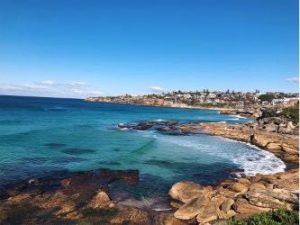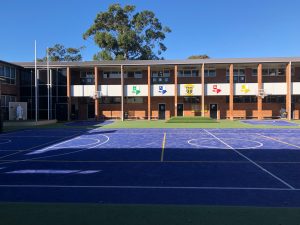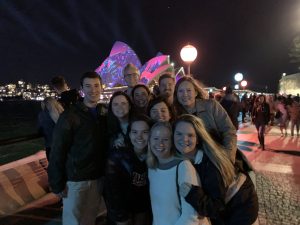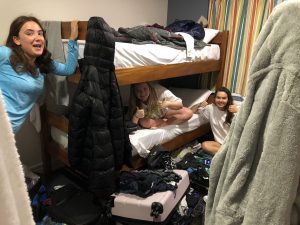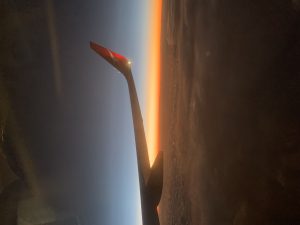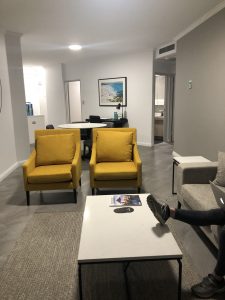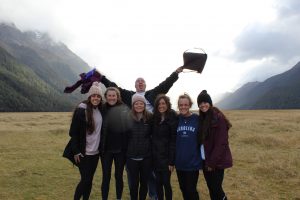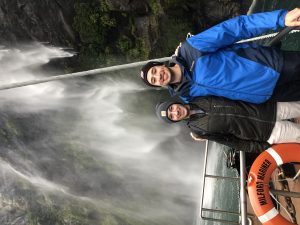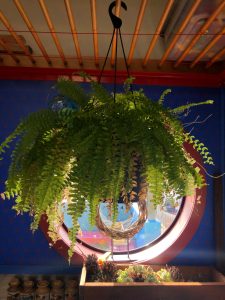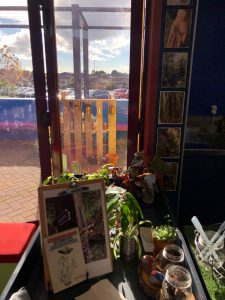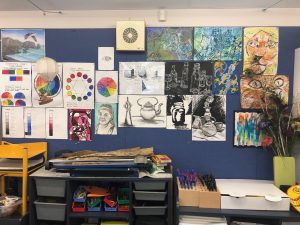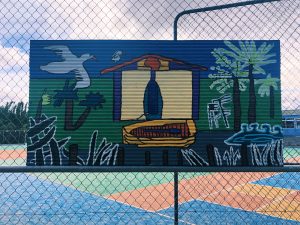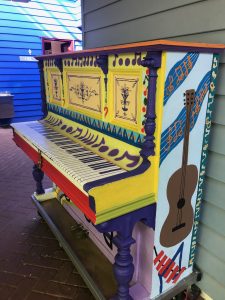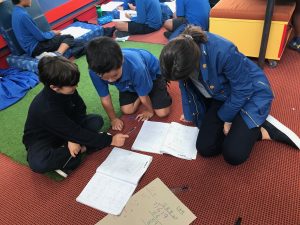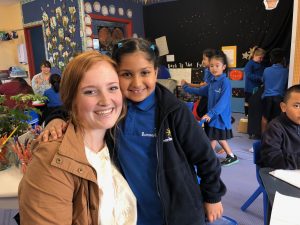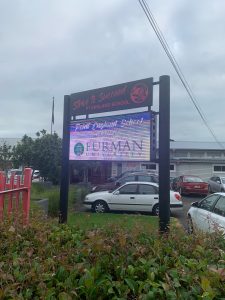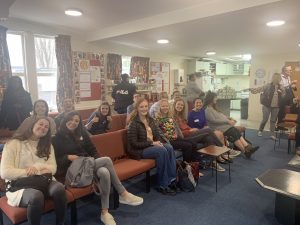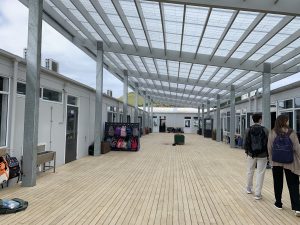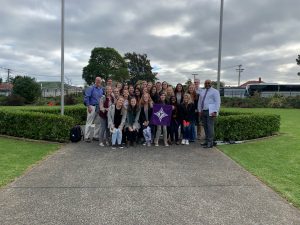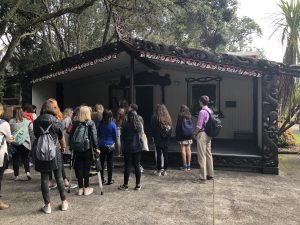Hello everyone!
Today, we visited two amazing schools and learned a variety of things that we can bring back to our own future classrooms in the states. To start off our morning, we visited Finlayson Park, a Decile 1 school made up of about 970 students that represent numerous cultural groups. To welcome us, a quarter of the students performed a traditional Maori welcoming ceremony called a Powhiri. We heard speeches in Maori, traditional songs, and watched the students perform a Kapa Haka. After the performances, the welcoming was finished with a Hongi, or the ceremonial touching of noses. Each of us went down the line touching our noses to those of the men of the school. This signified the end of our formal welcoming by the Maori people. The Kapa Haka was a perfect example of how Finlayson Park values the culture of each of their students. At this school, students are encouraged to speak, write, and explore in their mother tongue. English is learned through the child’s first language rather than ignoring that child’s mother tongue. Because this school has a large population of Maori students and students from the Pacific Island, Finlayson Park has worked to create bilingual units and total immersion classrooms to continue the child’s development of their first language. In the Samoan bilingual unit, the first three years of the child’s schooling is taught completely in the Samoan language while the second half is taught 50% in English and 50% in Samoan. In the Tongan and Maori bilingual units, the mother tongue is taught 50% of the time while English is taught the other 50% of the time. The Maori immersion unit is taught only in Maori with English introduced later on in small bits. Going into the bilingual units, we were able to see firsthand how valued the individual cultures of the students are. In the Tongan bilingual unit, students were found outside playing traditional Tongan songs on the guitar while others were sewing traditional dresses or making medicine with natural ingredients like it is done back in Tonga. One teacher explained how last week students made medicine out of ginger that can be used to treat sores in the mouth. The point is to let students know that the traditions and the beliefs of their home country should not be forgotten. The students in immersion and bilingual classrooms are there by parental choice, and some parents move to the area to give their students these options. Some parents choose to send their students to the mainstream classrooms taught only in English, but the school strongly encourages parents to embrace their first language and allow their students to learn in that language.
Another important factor of this school is the value of going outside. Students were often found running around in the courtyards, playing in sandboxes, or simply working at tables outside of the classroom. Students knew to stay on task if they were to be working outside, and it seemed that students enjoyed this opportunity. As the principal mentioned, students should not be confined within the walls of the classroom. Shoes were not worn inside or outside, and students walked around the school grounds freely, interacting with each other and their teachers. Each classroom also has a garden box, and that class is responsible for the upkeep of that box and the harvesting of the plants when they are ready. After touring classrooms, enjoying morning tea, touring more classrooms, and having a wonderful lunch, it was time for us to leave. We thoroughly enjoyed our time, and visiting Finlayson Park really gave us a wonderful understanding of the value behind the culture of each individual student!
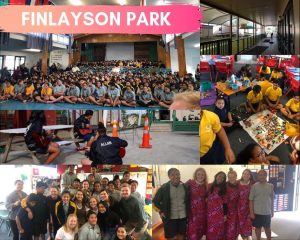
Finlayson Park pictures!
The next school we visited was Weymouth Primary School, just down the road from Finlayson Park. This school is over 125 years old and at the moment has about 550 students, 24 classrooms, and 50 staff members. Student population is 40% Maori, 40% Pacifica, 10% Asian, 5% Paheka, and 5% other. The school is Year 1 through Year 6 with the Year 6 students going on to intermediate school before heading to college. Students at this school are part of four team houses with two team captains (both Year 6 students) in charge of each house. Sometimes there are house competitions, and points are kept track of throughout the school year. Tokens are given every week to students if they are good, and those can be added to the points for the house. The four houses are Te Raki (blue), Te Whiti (yellow), Te Uru (red), and Te Tonga (green). The concept behind the houses is the idea that the older students should look after the younger students and set a strong example for them. Unlike Finlayson Park, there are only two bilingual classrooms for Maori available, one Year 1, 2, and 3 class with 26 students and one Year 4, 5, and 6 class with 24 students. However, there is a push to encourage more parents to select to send their students to the bilingual classroom. The main goal of the school this year is to improve student writing because there have been low achievement levels in writing for these students, especially boys. The school administration have come together to find ways to improve writing and exposing teachers to professional development workshops that show ways to teach effective writing in the classroom.
A unique part about this school, and a place where we had a ton of fun, is the garden. Here, students learn about sustainability and are exposed to caring for animals, gardening, and composting. The garden grows a variety of plants and also has a composting area. It is also home to two pigs (Trixie and Kawa), six chickens, and three bunnies. Students are able to see how food can be grown, picked, cooked, and eaten, and the pigs help to eat the waste of the school, reducing the carbon footprint. We watched as Year 1 students explored the garden looking for different creatures that lived within it. Following this exploration, students went back to the classroom where they made a list of vertebrates and invertebrates that they saw with the help of their teacher. This hands-on experience allowed students the opportunity to see for themselves what types of insects, mammals, amphibians, reptiles, and birds are living right in their school. After hanging out at the garden for quite some time, we all went into different classrooms throughout the school, looking at the ways students learned and interacted with their environment. Our visit with Weymouth Primary School was short, but we really loved interacting with the students and holding a few bunnies as well.
We look forward to the many other adventures we will encounter on the days to come!
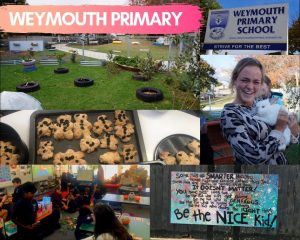
Weymouth Primary Pictures!
tēnā koe (Thank you in Maori)
Delaney and Addie
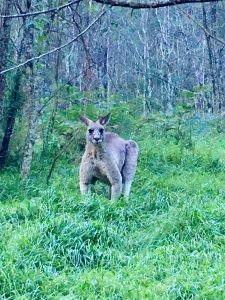
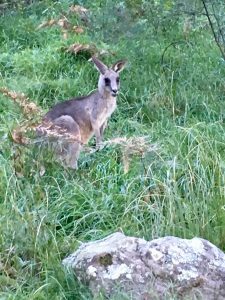

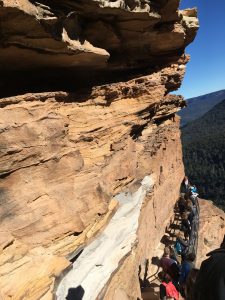

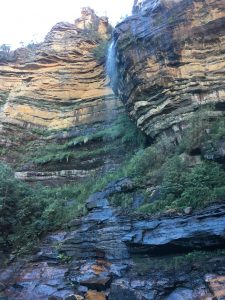
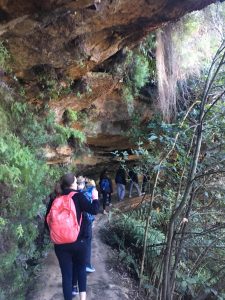
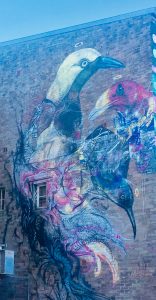
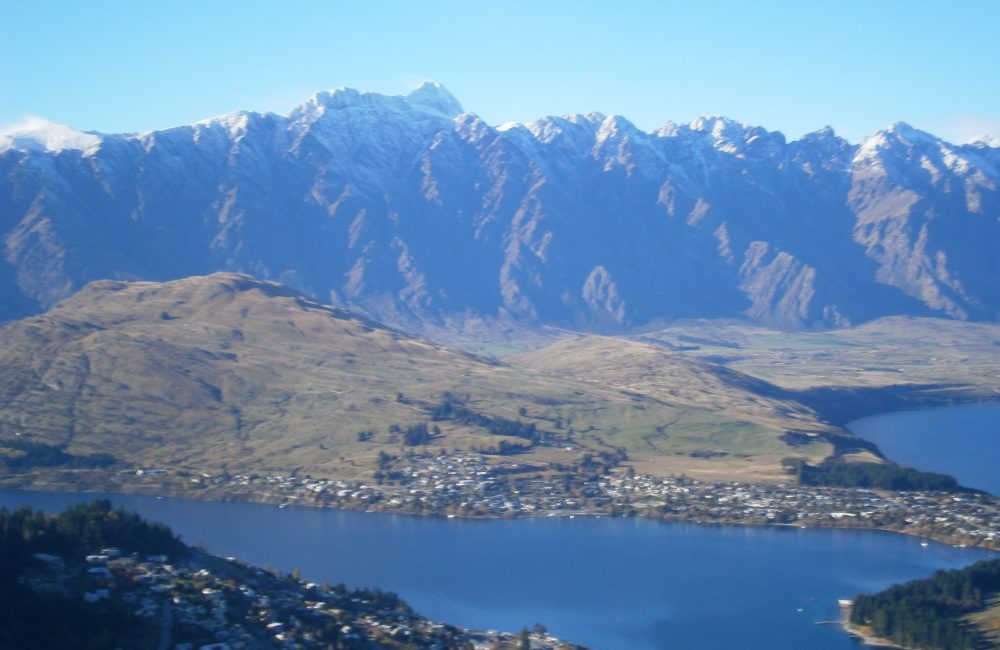


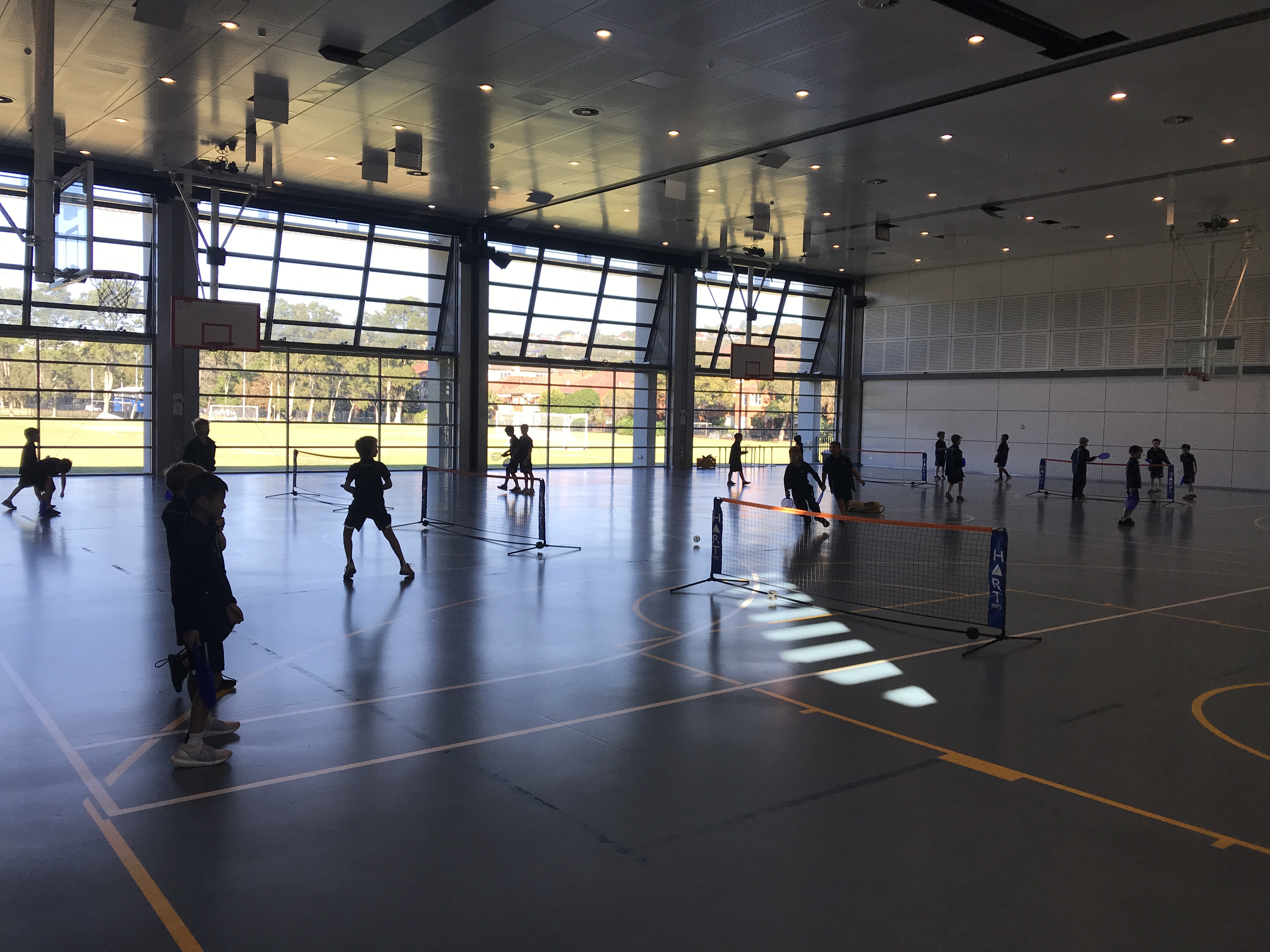

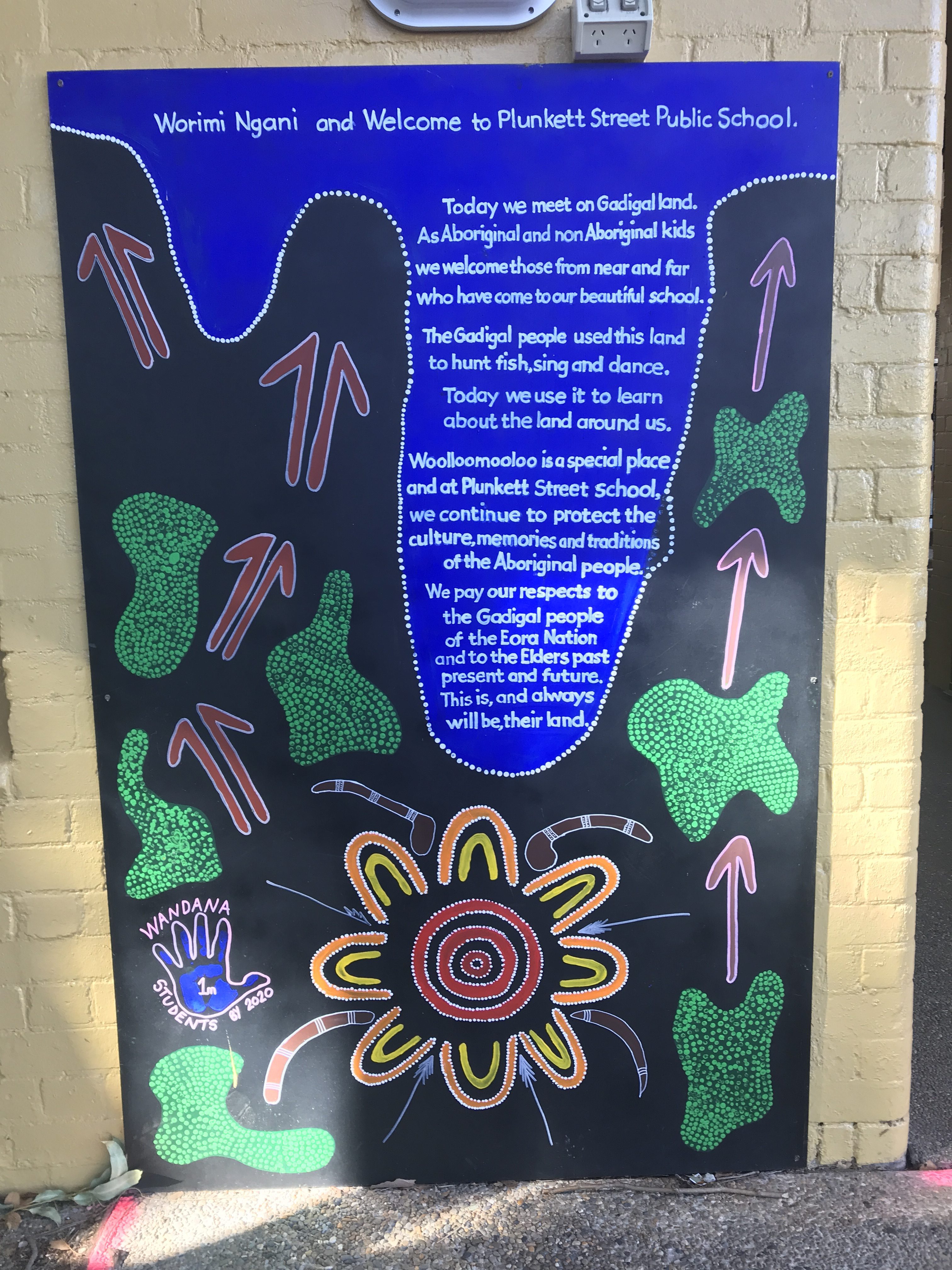 For the second half of this class, we went outside to play a friendly soccer match against the students. It was truly a tough game, but team America came out victorious 2-1!
For the second half of this class, we went outside to play a friendly soccer match against the students. It was truly a tough game, but team America came out victorious 2-1! After returning to the hotel via subway, some of us went to visit the art gallery in downtown Sydney, while others returned to hotel rooms for some R&R, and spent time working on upcoming assignments. Tonight, we will all find some tasty places to eat dinner in Sydney and get to bed before our early start for hiking in the Blue Mountains tomorrow!
After returning to the hotel via subway, some of us went to visit the art gallery in downtown Sydney, while others returned to hotel rooms for some R&R, and spent time working on upcoming assignments. Tonight, we will all find some tasty places to eat dinner in Sydney and get to bed before our early start for hiking in the Blue Mountains tomorrow!